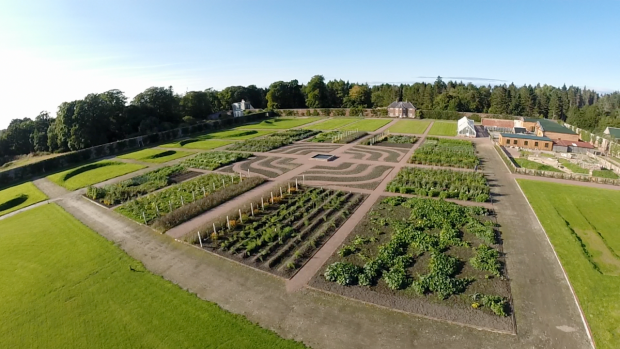Plans for the redevelopment of a historic Moray walled garden are expected to flourish in the summer.
Gordon Castle’s eight-acre expanse had fallen into disuse over several decades until restoration efforts were launched to bring it back to its past glory.
As work on the project has progressed, estate owners have been using it to grow fruit and vegetables for use in its kitchens.
And yesterday, owners Angus and Zara Gordon Lennox confirmed that work on the next stage of its redesign was under way.
Over the winter, eight pear tunnels were planted and a path has been created beneath them so that visitors can watch the fruit growing.
Gardeners have also established a quince meadow on the ground, featuring 11 varieties of the deciduous tree.
Four vegetable beds have been packed with produce such as peas, beans, garlic, Jerusalem artichokes and different colours of carrots, cauliflower, pumpkins and squashes.
In the next few weeks, the garden’s recently refurbished Victorian glasshouse will become home to heritage tomatoes and colourful chilli plants.
Mr Gordon Lennox said: “The garden team has spent winter preparing and planning so that we can hit the ground running and it’s thrilling to see their hard work and vision pay off.
“This year will see the next stage of the restoration take shape.
“It won’t be instant, the reality is that nature takes its time.
“But we’re pleased with how it is going, and also to see the same faces returning again and again to witness the progress being made.”
Other interesting additions include a family of Gordon Castle chickens, whose eggs will be sold from the on-site gift shop.
Flowers which have blossomed into life in recent weeks have also added welcome dashes of colour across the site.
The attraction is known as one of Scotland’s oldest and largest walled gardens, and award-winning Wales-based garden designer Arne Maynard has devised a bespoke vision for how it will eventually appear.
There is evidence of a walled garden existing at the estate from the 17th century, and it was first built in its present form in 1803.
After World War II, its eight acres were given over to commercial raspberry growing, then fell into disuse in the 1980s.
